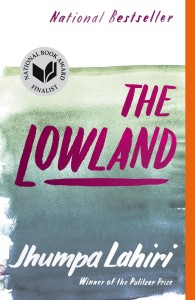Across two continents and approximately two lifetimes, Jhumpa Lahiri’s tale of the Mitra family unfolds in “The Lowland.” Brothers Subhash and Udayan grow up in Calcutta, after India has gained independence from Britain.
During this time period, the Naxalite movement, a Communist guerilla group fighting to abolish landholdings and rebel against police brutality, attains a following. While civic-minded Udayan embraces the ideology, cautious Subhash decides to study oceanography in the U.S. instead.

“The Lowland” is Jhumpa Lahiri’s second novel following her 2003 novel, “The Namesake.”
A global scope and omniscient narrator lends “The Lowland” an incomparable timeless quality. Lahiri effortlessly skips through time, seeing Subhash and Udayan’s lives through from start to finish. She includes the perspectives of multiple characters, from Subhash to Udayan to Gauri, the woman Udayan will marry.
Lahiri adopts an unbiased approach to her characters, never outright taking sides. Her characters are never flat, as a result, giving readers the ability to see both sides of arguments.
Take Udayan vs Subhash, for example. Udayan can’t understand why Subhash isn’t motivated to help the poverty-stricken, evicted from their land and starving. He seeks to help improve India.
Subhash, on the other hand, is disinterested in politics and fears endangering his family. Subhash views the Naxalite movement as something that will ultimately fail, when Udayan still has faith in it.
Lahiri’s story contains a diverse set of characters. There are single mothers and fathers, married couples, lovers, activists, farmers and scientists. The story is one of the bond between brothers, tested across distance. It is one of the bond between parent and child. It is a story of immigrants in America.
Although Subhash initially plans to move back to India and have an arranged marriage, events intervene, and he makes Rhode Island, where Lahiri was raised, his permanent home. He notices similarities between Rhode Island and Calcutta in their natural environment. Both places are at sea level, bordered by estuaries, with mountains to the north and ocean to the east.
Initially, Subhash feels like a foreigner in the country and wishes for companionship. Over time, however, he accepts that he will never return to India to live and raises his daughter in America. His daughter, in turn, learns a separate set of customs. She doesn’t eat rice and lentils with her hands and she doesn’t speak Bengali, the language of her parents.
At times, I must admit, however, that I did get tired of reading about Subhash, the primary character. Subhash, ever the family man, opts for a stable lifestyle. Not that he wasn’t complex, but it did get dull, reading about a “mild” character.
In addition, reading this book, gave me a profound sense of loneliness. Many of the characters are lonely for quite some time, and not much time is spent dwelling on romantic relationships.
Those who are willing to feel melancholic and appreciate the subtle feel-good moments Lahiri creates should read this book. The relationships between characters are always honest and genuine.
“The Lowland” is a beautiful story exploring the meaning of family, loss, and closure.